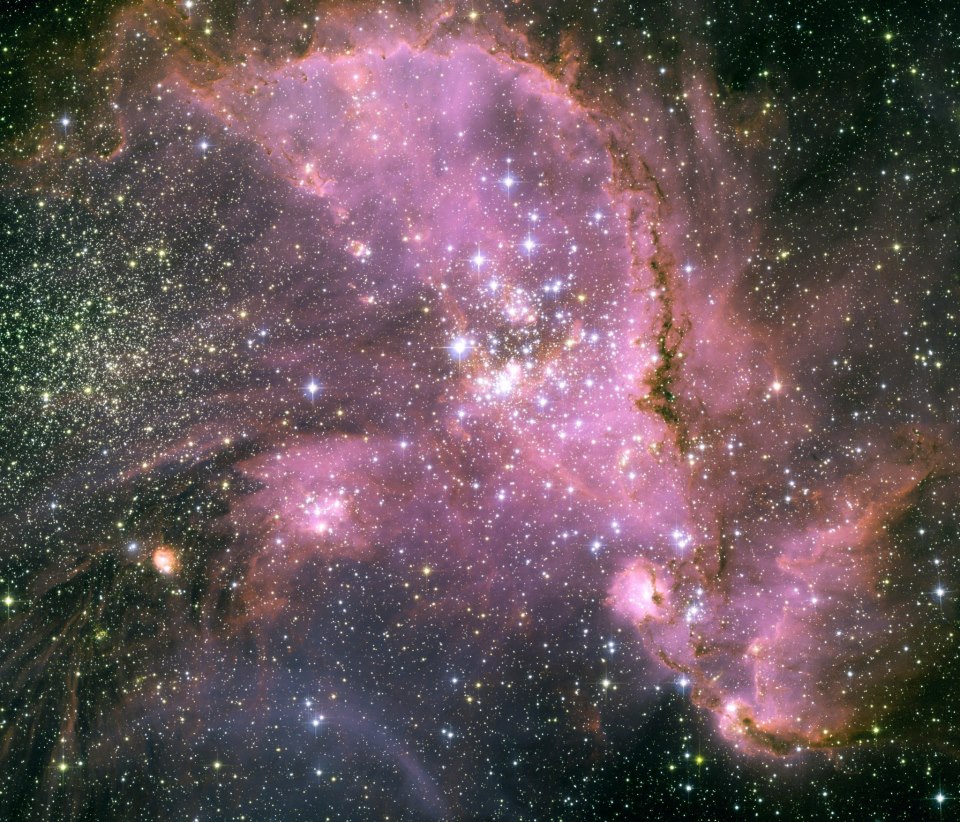

This glittery cosmic region is the result of an open cluster of stars, called NGC 346, affecting the interstellar medium in a large way. By that, we’re referring to the accompanying nebula — known as N66. Both objects can be found in the Small Magellanic Cloud (SMC), some 210,000 light-years away from Earth (in the constellation of Tucana).
N66 is an active star forming region containing numerous infant stars (more than 2,500 by some estimates), these young objects are only 3 to 5 million years old and haven’t started fusing elements just yet. However, they are still incredibly powerful, being that their stellar winds help shape and color the region. In return, the stars belonging to this clusters cause segments of the nebular cloud to collapse, bringing additional new stars to life.
Most notably, NGC 346 is home to HD 5980, the brightest star in the SMC and, indeed, one of the brightest stars known to us period.
See a larger image here.